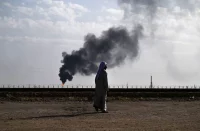External competition can have a strong impact on the development of internal competition. Competition with Transnational Corporations has already led many African countries away from the line of sovereign development. Latin America can follow the path of its colleagues. A study by The Elcano Royal Institute on the strategic importance of Latin America for cost recovery and recompense of the disrupted energy supply chains from Russia to Europe after the events of February 2022 showed that about 60% of natural gas producers in Latin America reoriented their supplies to Europe. At the same time, the fact remains that only the Southern Cone has sufficiently well-developed gas transmission networks.
On May 25, 2023, Cristina Fernandez de Kirchner also told her colleagues from Bolivia and Chile, who were trying to attract external investors mainly from China, the United States and the European Union: “What a desire to become a Potosi again! It’s better to want to become Malaysia, South Korea, but please not a Potosi.” The former head of Argentina, which is also part of the lithium triangle, had in mind the following: Latin American states, first of all their governments, should reorient and create industries that would be based on the riches of their own mineral resources, and not on imported raw materials of strategic importance, from which countries fall only into the greater and greater dependence, because the interests of external states may sooner or later not coincide with the national interests of Latin American countries. Deliveries will be suspended, production will be put on hold. And then what?
Another obstacle to the economic self–sufficiency of the region is its excessive debt burden. The “Golden Decade” (2003-2013) coincided with a decrease in the debt burden on the countries of the region, but the second half of the 2010s and the coronavirus with its consequences marked the opposite trend: by 2023, the total amount of public debt in Latin America amounted to 117% of GNP. Experts from the Inter-American Development Bank warned that this number is at least “alarming” for them, as it can “stifle” economic growth in Latin America and provoke a number of economic crises.
As for the political course of non—alignment, it can be associated with integration – by way of formation of structures in South and Latin America to reflect the collective will and voices of countries. However, integration in the region has been in a downward phase for almost a decade, leaving the region atomized. The demand for “non-alignment” and “freedom of hands” in the rhetoric of certain leaders does not become a common denominator in the integration circuit. For example, the stumbling block for the resumption of the operation of UNASUR in 2023 were disagreements between the presidents and ministers regarding the wording proposed by Lula, “UNASUR is the voice of South America in a multipolar world.” Chile, Paraguay, Peru, Ecuador and Uruguay did not agree with this option of a solidarized and independent positioning.
In general, for political reasons, Latin America is unable to support the strategic formats of regionalism for global positioning, in particular, to restore UNASUR, which once stimulated not only intraregional initiatives for development and human security, but even military-industrial cooperation, as well as to give real subjectivity to CELAC, which remains a diverse forum.
There are also opinions among politicians and experts that at the current stage it is the lack of regional unity and a common geopolitical vision that reduces the international weight of all players and opportunities for LA participation in global governance, including leadership in issues related to human development or environmental security. If the historical non-alignment was institutionalized at the global level, then at first glance there are enough sites for the “new non-alignment”.
However, the problem is the lack of common Latin American positions, compounded by disappointment and suspicion about the ineffectiveness of some multilateral institutions (primarily the UN, G20) and the asymmetry of others (BRICS, G7 + China). Under these conditions, the latter prefers to retain the role of a “developing state”, which implies a request for special relations with Latin America, including in the multilateral dimension.
Of course, the “new non—alignment” sounds proud and historical. This formulation has already penetrated the rhetoric of a number of Latin American leaders and experts and, quite possibly, will continue to be popularized in the conditions of the modern confrontational geopolitical environment. At the same time, such “non-alignment” hardly claims to be a holistic basis for foreign policy strategies now or in the near future. Taking into account both the inability of Latin American countries to offset the impact of external structural constraints, and the difference in the potential of conditional Brazil and Ecuador or Uruguay, the real expressions of “non-alignment” can range from proactivity programs in global governance and development assistance to situational maneuvering between leading external partners and counterparties.
Moreover, it is obvious that maneuvering and adjusting to system logic are much more applicable in Latin America. Similarly, as long as “non—alignment” is not associated with a region-wide or sub-regional project, Latin America cannot use either its own or global institutions to appear as a collective “third force” against the background of rivalry between the West and China and Russia. At the same time, it is important to take into account that if the original “non-alignment” was formed in the Yalta-Potsdam system, which had already entered into its rights, with relatively clear patterns of internal functioning, then now the international system is characterized by chaotic, unpredictable and multilevel distribution of power and influence between states and other actors.
On the one hand, this means that the allusion to the “second cold war” is very conditional, and the space of alternatives and ways to “free hands” for Latin American players is wider than it seems in the planes of “rich North against poor South” or “West against non-West”. On the other hand, this allows us to link the actualization of the ideas of “non-alignment” not so much with the de-escalation and certain harmonization of international interaction around a set of universal problems, but with the further complication of global dynamics, the involvement of Latin American players in multidirectional formats of cooperation and rivalry and, naturally, the intensification of the fight of the great powers for allies and partners in this region.















Comments